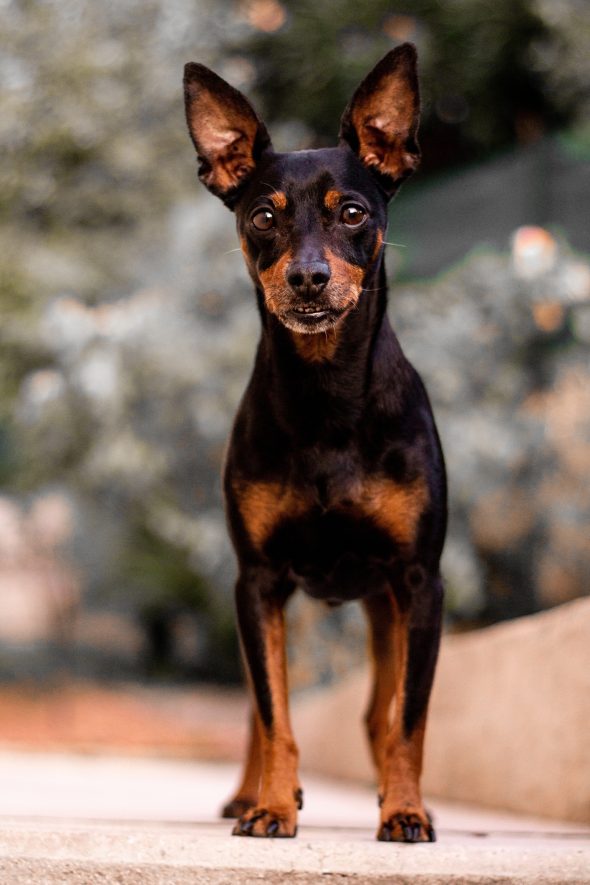
When Czechs and Slovaks “rediscovered” the Prague Ratter in the 1980s, not everyone may have bargained for the strict rules governing the breed. Fanciers learned that the parent club meant business to protect what is probably the Czech Republic’s oldest national dog breed. A strict set of rules had to be followed before any dog could be bred, and the rules included a minimum age to be bred, participation in at least one exhibition organized by the club from the age of 9 months, documentation of a patella examination from an accredited veterinarian, and an evaluation of conformation, temperament and health by an expert. The rules are still in place (we translated them for this post using Google translate, so accuracy may be “loose”).
Along with being over a certain age, sire and dam must have been successfully shown a couple of times, in addition to being evaluated by an expert for conformation, temperament and health. After the birth of the puppies, the breeder is obliged to report the birth of puppies to the selected PCH or HPCH within 5 days after their
birth. Ratter puppies from the approved litters are visited by a breed advisor at the age of 6-8 weeks who will immediately disqualify any subpar puppies from receiving a pedigree. The minimum age for taking puppies from their dam is the 50th day after their birth, and then the entire litter must be marked uniformly and on the same day, at the earliest at the age of 4 weeks for puppies in chipping and tattooing at the age of 6 weeks at the earliest.
There are rules for names. The names of the puppies of the same litter start with the same letter. The litters must be sorted alphabetically (ascending) behind, and names must not consist only of a Czech or foreign language preposition, and names of puppies must not be repeated in one kennel within one breed.
The amount of documentation and paperwork involved in breeding a Prague Ratter to be in compliance is somewhat daunting, but it can’t be denied that because of the strict breeding protocols, the breed is pretty healthy and uniform in type. One has to admire the dedication of the club to preserve their breed, and it is understandable. The “Rat” is a thread in the tapestry of the country’s history and dates back to around the year 1000.
When banquets of Czech kings were held at Prague Castle, the Prague Ratter was there. A fixture at the courts of Czech nobility, dogs were often a gift of Czech monarchs which is how the breed reached the courts of other European heads of state, including the Polish King Boleslaw II the Generous (1058-1081). Over time, the breed found its way into the general population.
These are “stinkn’ cute” dogs. See if you don’t agree:
Sources estimate that there are just 6,000 Prague Ratters registered with kennel clubs, most of them in Slovakia and the Czech Republic. There are also breed clubs in America and Australia. You can read a bit more about the breed in an earlier post.
Image: Prague Ratter by © Wirestock/Dreamstime Stock Photo
